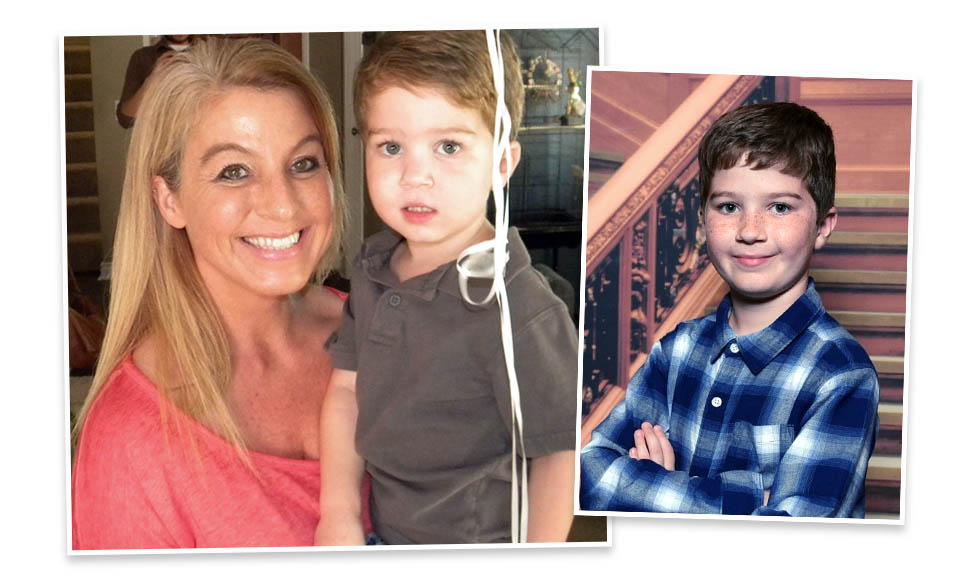The mother says that the sooner I know, the more tools and options will become available.

Luca is in fifth grade. He loves video games, building things, and learning about the universe. You can name all the planets and space shuttles. Luca also has autism spectrum disorder (ASD), or autism.
His mother, Tracy Sekhon, says autism doesn’t hold him back, it drives him. The first signs appeared in 2010, when Luca was just 18 months old. Tracy and her husband noticed that she had some developmental issues.
“Not only did he stop moving forward, he started going backwards. He had started making sounds that didn’t match what he was seeing,” says Tracy.
For example, he called his father “bye-bye” instead of “dad.”
At first, they thought that Luca had a hearing problem. And indeed, it turned out that he did not hear well. But after undergoing surgery and receiving speech therapy, the problems continued. For example, he stopped responding to noises as before. And he started banging his head non-stop unless there was someone in front of him, Tracy recalls.
Listen to your instinct
The pediatrician told Tracy that Luca’s behavior was probably due to his hearing problem, but she wasn’t convinced. Tracy and her husband did a lot of research, and she went back to see the pediatrician. He asked her to refer Luca to a specialist to find out for sure whether or not he had another problem.
“My instincts as a mother told me that my son had something more,” recalls Tracy.
The pediatrician recommended the University of California San Diego (UCSD) Center of Excellence for Autism, located in La Jolla near Tracy’s home. The center focuses on early intervention, so they met with Dr. Pierce and other doctors.
After two days and several hours of testing, Luca was diagnosed with autism. He was 22 months old.
“We were diagnosed with autism and told it was moderate to severe,” Tracy recalls. “My baby had stopped talking. He had regressed in his development. We had lost him. It was terrifying.”
After diagnosis
Tracy quickly enrolled Luca in behavioral, speech and occupational therapy services through UCSD. She also enrolled him in therapeutic research studies as a way to not only support Luca, but also to help others learn from her son’s experience.
-Tracy Sekhon
Some key steps of treatment occurred outside of the UCSD center. For example, for a month, Tracy took Luca to a nearby mall for short periods of time so that he would begin to feel more comfortable in that type of social situation. He also spent a lot of time researching and asking questions.
“I educated myself as much as I could, because the more I learned, the more prepared I felt and knew that I could make a change for him,” says Tracy.
When Luca turned three, she enrolled him in the California public schools and he has been studying there ever since.
Now 10 years old, he learns alongside the rest of his fifth grade class. You receive some extra classroom support in a one-on-one education program, but most of your learning happens alongside your classmates.
As a result of this experience, Tracy is active in the autism community and launched her own non-profit organization, the Autism Resource & Treatment Center (ARTC), in San Diego. The ARTC focuses on early intervention, educating the public and supporting adolescents and adults, who need more attention and resources, according to Tracy.
Empowerment through education
Looking to the future, Tracy says the early diagnosis and early support Luca received let his family know that while things may change, they have the tools to help him succeed.
“I know that in Luca he will face more challenges in his life, but now we understand what that means,” adds Tracy. “You just have to hand him these tools. His situation today is the fruit of the hard work we did from the beginning.”
While not all stories are like Luca’s, Tracy wants people to know that early diagnosis is key to making a lifelong difference in child development, not just at the time of diagnosis.
“For us as parents, because we want them to be perfect so badly, it’s easy to look at our children and make excuses for difficulties,” Tracy says. “Educate yourself first and foremost to prepare yourself, focus on what’s possible, and make sure you’re realistic with the diagnosis from the start.”
Foto: Cortesía de Tracy Sekhon